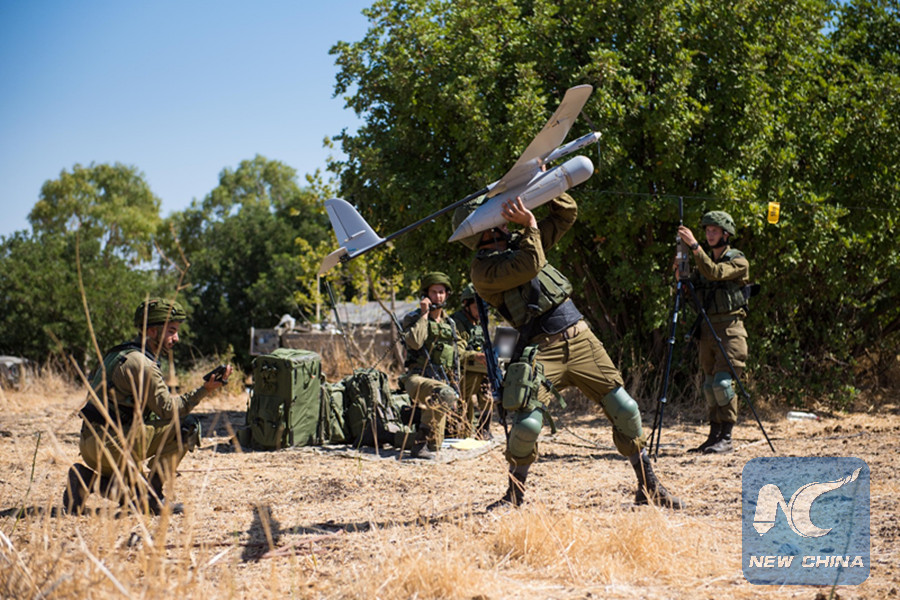
A unit of Israeli soldiers are training to use a mini drone, named Skylark, which could give the ground forces a wider view of the battlefield to gain advantages. (IDF Photo)
by Keren Setton
JERUSALEM, Feb. 11 (Xinhua) -- With hundreds of soldiers being trained to use the Israeli created Skylark, the way they see the battle field has been transformed.
The unit, founded in 2010, was initially attached to a different unit and was not independent.
But with the increase in its use and importance, it is now an "attachable unit" with combat soldiers ready to join any other force, including special operations.
The Skylark is a mini-drone that is carried on the back of a soldier and thrown into the sky in order to give the forces on the ground a wider view of what is going on.
Once in the air, it transmits the images to the soldier operating it.
The vessel, essentially a mini UAV, has no recording parts on it, so none of the information conveyed is stored on it. If it happens to fall into enemy hands, there is no risk of information leaking.
According to Major Aharon Faran, commander of the Skylark training school, it has additional advantages that make it an asset in the battlefield.
"The chances of it being detected are almost zero," Faran told Xinhua. "It is very small, it has an electrical engine that makes it much more secretive than other similar vehicles."
Faran said the naked eye cannot detect the drone in the sky while being operated.
It is manufactured by Israeli Defense Firm Elbit Systems which said the machine has a "very low visual and acoustic signature."
The drone is used by several armies around the world.
The camera can provide both day and night vision.
"It gives us greater ability to aim fire at targets," said the commander.
Although traditionally, any military action that requires flying has belonged to the air force, Skylark unit members are part of the Israeli ground forces and they are trained as combat soldiers. They need to be able to carry about half of their body weight on their backs, about 50 kilograms, for lengthy periods of time.
Female soldiers are also part of the unit; however, they do not carry the weight. They participate in missions in which a vehicle can be used and the drones are operated from.
Faran would not disclose specifics, but said the mini-drone can stay in the air significantly longer than similar products in the market "due to its battery and other features it has."
Each team which is deployed comprises of four soldiers and one commander.
They carry with them three Skylarks. This enables "continuity of prediction," said Faran. "If one of the planes crashes, it's not the end of the story, we can continue with the mission."
This is perhaps its greatest contribution in times of war.
"In 'real-time' this is a fundamental change. There is now someone that is always looking several steps ahead and knows what is going on," Faran told Xinhua.
Since becoming operational, there have been several accidents with the drones. Some have been attributed to technical malfunctions and some to human error. With an average of 1,000 flying hours annually, the number of accidents has been miniscule.
Their cost of production is considered relatively low, making the loss a little less painful.
When not in combat, the unit's soldiers continue to be busy. They deal with intelligence gathering, border monitoring and also help in police work like looking for missing persons or weapons smugglers.

